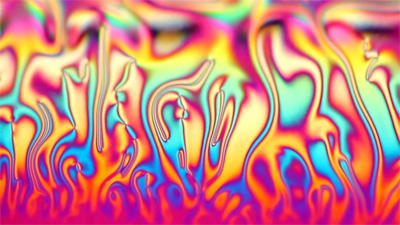Turbulent flows in active nematic liquid crystals lead to spontaneous topological defect creation. Researchers Maruša Mur, Žiga Kos, Miha Ravnik and Igor Muševič from the Department of Condensed Matter Physics at the Jožef Stefan Institute and Faculty of Mathematics and Physics at the University of Ljubljana have published a paper in Nature Communications, titled Continuous generation of topological defects in a passively driven nematic liquid crystal, where they study a similar behavior in a passively driven system. Here, the flow is driven by a concentration gradient of small organic molecules added into a thin film of a nematic liquid crystal. Counter-rotating vortex rolls are generated in the film. Above a velocity threshold the flow transitions from a laminar into a turbulent regime, where topological defects start forming continuously. In the paper authors support their experimental findings by numerical simulations. The work describes one of the few mechanisms of topological defect creation in soft matter.

